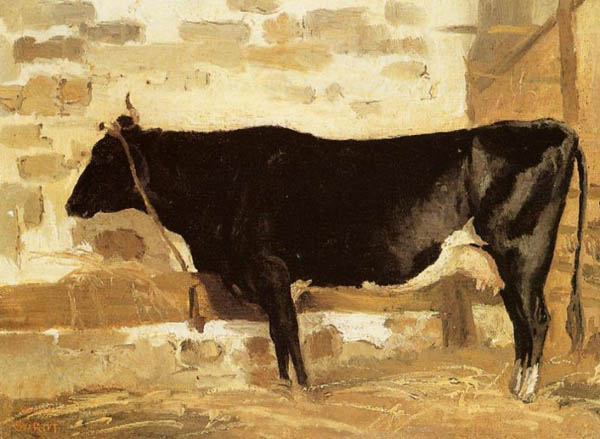January
What do the Animals do in Winter?

People live in warm houses and wear heavy coats outside in winter. We find plenty of food at the grocery store. But what happens to the animals?
Farm Animals
In colder parts of the country, farm animals may go into a barn or some other shelter, but in Oklahoma most farm animals stay outdoors. The farmer/rancher may build or plant a wind break to provide shelter from the harshest conditions. Farm animals adapt to the cold weather by gaining weight and growing winter coats. The farmer or rancher checks daily to make sure livestock has enough food and water. When temperatures drop, ponds may freeze, so the farmer/rancher chops through the ice with an ax to make a hole big enough for the animals to drink from. Animals need large amounts of food in winter to stay warm, so round bales of hay are delivered to the field by tractor for the animals to eat.
The wild ancestors of farm animals survived winter in several ways, just as wild animals do today.
Migration
The wild ancestors of cattle were probably migratory, like bison, deer and elk. These animals move around in search of food and shelter.
Many birds migrate in the fall. Because the trip can be dangerous, some travel in large flocks. Many fish migrate, too. They may swim south, or move into deeper, warmer water. Insects also migrate. Some butterflies and moths fly very long distances. For example, Monarch butterflies spend the summer in Canada and the Northern U.S. They migrate as far south as Mexico for the winter. Most migrating insects go much shorter distances. Many, like termites and Japanese beetles, move downward into the soil. Earthworms also move down, some as far as six feet below the surface.
Adaptation
Some wild animals adapt, like Oklahoma farm animals that stay outdoors in winter. To keep warm, they may grow new, thicker fur. On weasels and snowshoe rabbits, the new fur is white to help them hide in the snow.
Food is hard to find in the winter. Some animals, like squirrels, mice and beavers, gather extra food in the fall and store it to eat later. Some, like rabbits and deer, spend winter looking for moss, twigs, bark and leaves to eat. Other animals eat different kinds of food as the seasons change. The red fox eats fruit and insects in the spring, summer and fall. In the winter, it cannot find these things, so instead it eats small rodents. Wild boar, the wild cousins of domestic swine, adapt by growing heavier coats and changing their diet.
Animals may find winter shelter in holes in trees or logs, under rocks or leaves, or underground. Some mice even build tunnels through the snow. Animals like squirrels and mice may huddle close together.
Hibernation
Some animals "hibernate" for part or all of the winter. This is a special, very deep sleep. The animal's body temperature drops, and its heartbeat and breathing slow down. It uses very little energy. In the fall, these animals get ready for winter by eating extra food and storing it as body fat. They use this fat for energy while hibernating. Some also store food like nuts or acorns to eat later in the winter. Bears, skunks, chipmunks, and some bats hibernate.
In ancient times, people living in cold climates may have survived the winter with their own form of hibernation. One historian reports that in the mountains of France, when the weather turned cold, people would settle in for warmth with their cows and pigs and do nothing for months on end. This practice also helped conserve limited food supplies.
- Describe a winter day in the life of a farm animal.
- Pretend you are a migrating animal in winter and write a letter home about your migration.
 Cow in a Stable, 1845 by Jean-Baptiste-Camille Corot
Cow in a Stable, 1845 by Jean-Baptiste-Camille Corot
